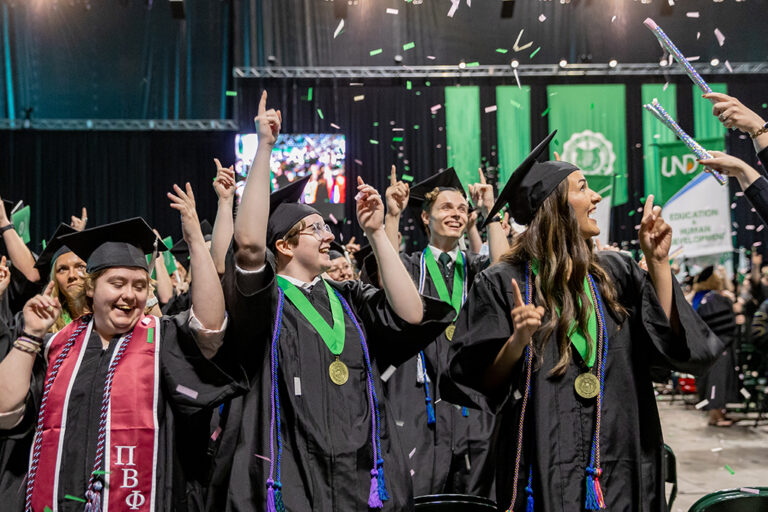Not what the stereotypes suggested: UND study sheds light on vaccine hesitancy among young adults
Department of Communication research seeks to improve COVID messaging and methods

When it comes to persuading people to get vaccinated as protection against COVID-19, a University of North Dakota study shows there’s no one-size-fits-all message that works for most people.
The study on the largest demographic group of unvaccinated residents in Grand Forks County was conducted by Soojung Kim, an associate professor in UND’s Department of Communication. It identified an unexpected result: those choosing not to get vaccinated are 19 to 29 years old and consider themselves liberals. As of June 2022, just 47% of this group had been vaccinated, compared to 70% to 90% of older demographic groups.
“News coverage tended to politicize this issue to show those who are vaccinated are liberals and those opposed to vaccinations are conservatives, Republicans and (Donald) Trump supporters,” Kim said. “But that’s not what the data is telling us.
“A lot of people in their 20s in Grand Forks County identify themselves as liberal, but they refused to get vaccinated because they had questions and concerns,” she explained. “These hesitant individuals aren’t anti-vaxxers; they’re actually very thoughtful about their health.”
According to Kim, this isn’t unique to Grand Forks County. Vaccination rates among the 19-29 age group were low in other peer North Dakota counties, which is also consistent with national trends.
What’s the message?
Kim’s research was divided into three parts. The first was four in-depth interviews with five focus groups comprised of 26 unvaccinated Grand Forks County residents. The second part analyzed 290 posts on the Grand Forks Public Health Facebook page between November 2020 and April 2022. The third was an online survey of 526 unvaccinated county residents.
Two messages commonly used to encourage vaccinations were an appeal to preserve the collective health and well-being of the community, as well as protecting those with underlying health conditions or compromised immune systems. Financial incentives also were offered to encourage vaccinations.
However, Kim said her research showed that these messages and incentives weren’t effective at convincing hesitant young people to get vaccinated.
“One of the major barriers for them to getting vaccinated was conflicting information,” she said. “They didn’t know what to trust because some of the reputable health organizations were releasing conflicting information at times. They also changed their standards and regulations frequently, which created hesitancy about the safety and efficacy of the vaccines.”
Boomerang effect
Paying people to get vaccinated and offering other incentives could have produced a “boomerang effect,” creating the opposite result of what was intended, according to Kim.
“When people develop their own knowledge about tactics, it primes their persuasion knowledge,” she said. “They believe something is going on they don’t know about, which fuels the distrust and the uncertainty they already had.”
Kim commended Michael Dulitz with the Grand Forks Public Health Department for reaching out to her in November 2021 about conducting research on vaccination hesitancy. He wanted to understand why fewer than half of younger people had gotten vaccinated while large majorities of older demographic groups were vaccinated.
One of the key lessons Kim gleaned from the study was that rather than using Facebook as a one-way form of communication to broadcast information – such as vaccination site locations and hours – it could be used to engage those reluctant to get vaccinated by helping to address their concerns.
Moving the needle
“General information might be helpful to those who already decided to get vaccinated, but it wouldn’t register at all with those who were still hesitant,” she said. “What helps move the needle for hesitant individuals is assurance about the vaccine being safe and effective and how it helps reduce the severity of COVID.”
But Kim said that type of information wasn’t being communicated at the local level, which meant people’s concerns weren’t being addressed.
–30–
